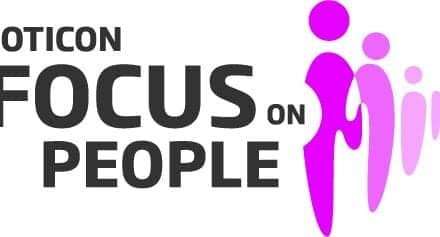Five steps to achieving your objectives
Setting and achieving goals takes time, effort, and perseverance—but the rewards to you and your practice will be well worth it.
| Kevin St. Clergy, MS, is an audiologist and president of EducatedPatients.com. Previously the director of clinical development for the Sonus Network, he has worked with hundreds of practices nationwide, helping dispensing professionals and their teams solve key practice management issues by developing effective and cost-efficient marketing methods, proven sales techniques, and a patient-centric experience for long-term loyalty. He is also author of the book, The Death of Audiology (www.deathofaudiology.com), and wrote this article in consultation with CareCredit. | 
|
As the old saying goes, “If you don’t know where you’re going—any road can take you there. However, when you have a clear-cut destination, you select the route that’s best.” Setting professional and financial goals for yourself and your audiology practice lets you focus your energy and resources and provides a well-defined “road map” to success. When you know exactly what you want to achieve and have a specified time frame to achieve it, it’s easier to concentrate on accomplishing the task.
When it comes to setting and defining your professional and financial goals, you want to be SMART. This means you want to ensure that your goals are:
Specific,
Measurable,
Action-oriented,
Realistic, and
Time-appropriate.
Using this mnemonic as a guide to goal setting will help you achieve your goals quicker and more effectively. A goal should be written down and it should include:
- What you plan to accomplish;
- What resources you’ll need to make it happen;
- How much time you’ll need to accomplish your goal; and
- How you plan to achieve it in your current circumstances.
Let’s take a closer look at each of the SMART categories and see how they can help set you on the path to greater success. Your goals or goal statement should include all five elements of the SMART philosophy.
1) Make Your Goals Specific
When you set professional and financial goals, they should be as specific as possible. A vague goal that is not clearly defined invites procrastination. “Increasing hearing aid sales” is a goal that a lot of dispensing practices share, but it is a very undefined goal. How many more appointments do you want or need to schedule? How will you go about increasing the number of appointments that you schedule?
In crafting a goal statement, you want to be as specific as possible. For example, “We will increase hearing aid sales by $250,000.” A specific goal gives your mind something tangible to wrap itself around, and makes it easier to achieve success because it states exactly what you want.
2) Make Your Goals Measurable
When you define your goals, make sure they are measurable or results-oriented. You want to be able to see the fruits of your labor and know specifically how attaining your goals will benefit your practice. In addition, you should be able to clearly monitor and evaluate the effectiveness of your goals over time. For example, if your goal is to increase sales, how much of an increase do you need to see over time to feel as though you were successful? Here is an example:
To generate $100,000 in additional revenue for my practice by year’s end, we will need $20,000 in additional revenue per month for the remaining 5 months.
Setting a specific numerical goal provides a benchmark that you can review on a regular basis to ensure that you stay on track to hit your year-end goal.
3) Make Your Goals Action-Oriented
The goals you set for your practice should inspire you and your team to take action. Passive, weak, and ineffectual goals lead to passive, weak, and ineffectual responses. Don’t be afraid to dream big and tackle a goal that will make a positive impact on your practice.
Explore all of the possibilities and include them in your goals. Do you have a system in place to help patients overcome barriers to accepting your recommendation? Is affordability addressed up front and repeatedly during your consultation? Do you offer payment options that make your practice more attractive than competitors? If not, what can you do to improve upon these issues? By improving upon them, you are more likely to increase the number of hearing aid sales in your practice. Here’s an example of a specific goal statement:
My goal is to double the number of appointments I currently book by year’s end from 20 to 40 per week. I will achieve this by improving my practice’s telephone skills, developing additional partnerships in the health care and senior communities, and implementing a referral program.
Action-oriented goals keep you working toward a desired end result. Don’t waste your time setting goals that won’t mean anything for your professional and financial future. For example, let’s say that you have decided to sell more instruments than a competitor by undercutting them on price. This goal may provide some initial satisfaction, but will it really help you grow and maintain a successful practice over time?
It’s better to set goals based on your own personal future rather than measuring them to the standards of others. For instance, developing a long-term strategy to address affordability and cost concerns by offering a patient payment program like CareCredit® would certainly help more patients improve their hearing and do more for your brand in the community than simply running a limited-time price reduction.
4) Make Your Goals Realistic and Relevant
While you definitely want to choose goals that are action oriented, you also want them to be realistic and attainable. This is fairly obvious; however, it is something that many people overlook when setting goals. For example, increasing the number of weekly appointments in your practice from 40 to 240 is probably an unrealistic goal unless you plan on expanding and adding several partners.
If your goal isn’t attainable, you have no chance of reaching it. In fact, one of the major reasons goals are not achieved is because they are simply unattainable. If the task you set is beyond the capabilities of your practice, you are almost certainly doomed for failure. This doesn’t mean that your goals should not challenge and stretch you and your team, but your goals and objectives must take into account the realities of your current marketplace.
Is the goal manageable in the time frame and with the current resources at your disposal? There may come a time while trying to achieve your goal that you realize it requires resources that are unavailable or can’t be made available. In these cases, think outside the box to find solutions to resource shortages. Empower your team to find new alternatives if resources are at a premium.
5) Make Your Goals Time-Bound

|
|
“‘Selling’ in the Professional Setting,” by Kelly Riggs. February 2006 HR. “Why Quality Matters,” by Brian Taylor, MA. August 2005 HR. |
Goals need to have a deadline. If you can’t assign a deadline within your goal statement, you probably need to make your goal more specific. Assigning a finishing date allows you to go back and create benchmarks along the way that ensure that your goal attainment is on schedule. In addition, when you give your goal a deadline for achievement, you automatically increase the energy around it. Limited time creates a desire to act now. And time-appropriate goals also limit procrastination. But be sure to give yourself and your staff enough time to achieve your goals as well. Don’t short-change yourself and wind up unsuccessful in achieving your desires.
No matter what goals you set in life, you must take action in order to make them come true. By clearly stating, effectively communicating, and following through on your goals, you will put the necessary processes in place to ensure your success.
Correspondence can be addressed to HR at [email protected], or Kevin St. Clergy, MS, at www.EducatedPatients.com or www.deathofaudiology.com.
Citation for this article:
Clergy K. The SMART Way to Set Professional and Financial Goals Hearing Review. 2009;16(8):38-41.





